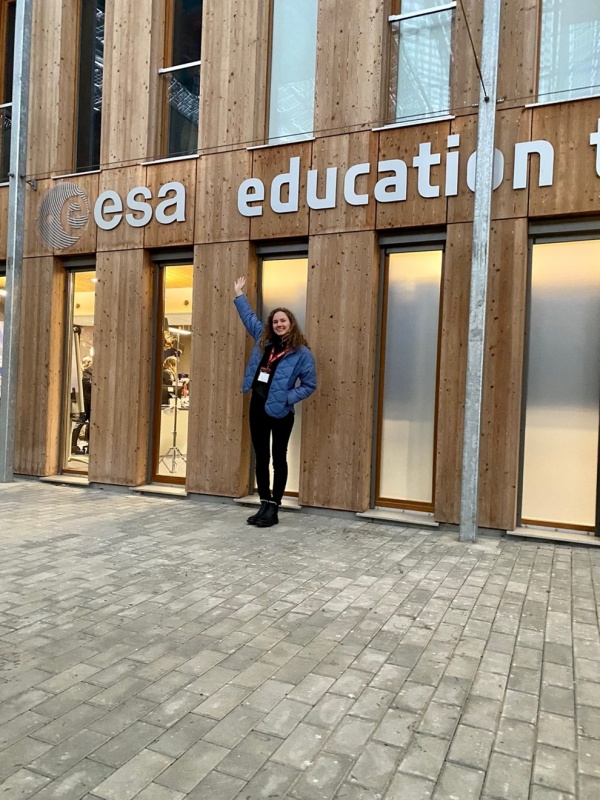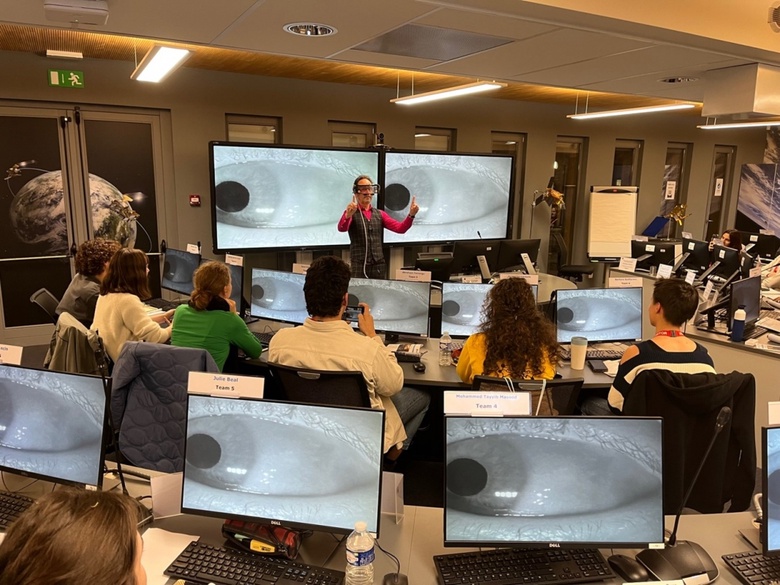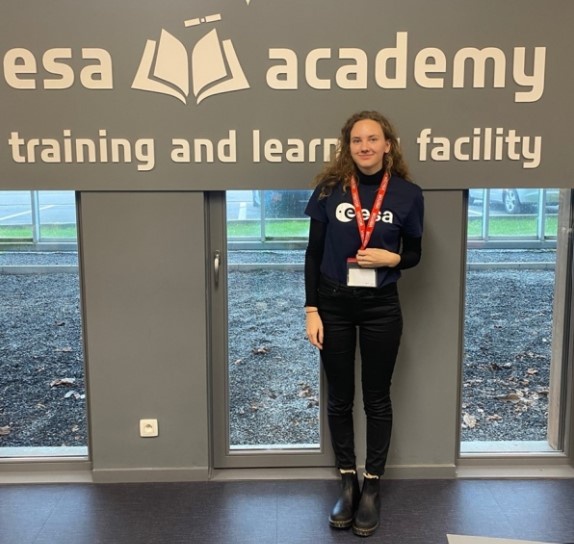In November 2022, I travelled to ESA Academy in Belgium, an education and training facility of the European Space Agency, to spend a week learning about space physiology. 30 students from all over Europe were selected for the, now annually organised, Human Space Physiology Training Course. This is an exclusive course for medical and life science students to learn about physiology in the space environment and the research that is done to support human space exploration in the European and global community.

Myself in front of the education and training building at Galaxia
During Covid, the course was running online, but I was lucky to join the programme now that it was running in person for the first time since the pandemic. The programme took place in Galaxia, an ESA training and learning facility, which is part of the European Space Security and Education Centre (ESEC). ESEC is like a small village of space science facilities where you get to observe various multidisciplinary teams working together. The course was delivered in collaboration with the European Astronaut Centre and ESA Space Medicine Team. Our lecturers featured cutting-edge researchers in space physiology and scientists who train and test astronauts.

Visit to the Euro Space Center. Credit: Human Space Physiology Training Course, ESA 2022
The course covered a wide range of aspects related to space physiology, including the challenges of the main organ systems, and how these have been tackled on past moon exploration programmes and missions to the International Space Station. The focus of the course was to encourage students to become interested in space physiology and contribute with their unique scientific background. The discussions at the end of each session were the essence of the course as students from various medical and life science backgrounds presented their insightful questions. To me personally, the most interesting discussions were regarding cases of neuronal plasticity and the various changes that affect the entire nervous system, particularly the vestibular system faces challenges in microgravity since our sensory system is calibrated according to the spatial sensory information on Earth. Cardiovascular changes, such as orthostatic stress, affect how our autonomous nervous system functions and this can have an impact on an astronauts performance.

Floris Wuyts demonstrating the vestibulo-ocular reflex. Credit: Human Space Physiology Training Course, ESA 2022
Astronauts are a unique and fascinating research demographic, not only do they match strict physical and physiological criteria, but also personality and character are important for a safe mission. Confinement and isolation on the International Space Station bring a psychological dimension that can only be somewhat matched by locking test subjects in an Antarctic research facility for several months (see Concordia). In addition, astronauts provide exceptional data in that we do not only have post-flight data, but astronauts are tested before, during, and after spaceflight, giving comparable data across the entire process. We were taught how this data is used to minimise physiological deconditioning during spaceflight and what are the key measures in rehabilitation after an astronaut returns to Earth after a long mission. On the last day, we even got to speak with a previous ESA astronaut Frank De Winne!
Along with around 20 lectures during the week, we worked on a group project in multidisciplinary teams consisting of students from different scientific backgrounds. Every team received a medical or physiological challenge to tackle on a future space mission, either on the lunar gateway or in Mars, and performed a literature search to provide a research roadmap to bring solutions for safer human space exploration. This task was an inspiring learning experience and showed how bringing different minds together can provide solutions to complex problems.
The course was an eye-opening experience by showing the vast paths that can lead a scientist to work in an organisation such as ESA and also the variety of research you can get involved in. One does not have to be a life-long space nerd or a space engineer to have a central role on a mission. Furthermore, we are on the brink of the commercialisation of space flight, whether this will also happen in Europe is in the hands of the European people and a new generation of young scientists. Space physiology research gives the opportunity for the study of degenerative disease using novel earth-based analogue methods, which is a valuable asset in tackling the health problems of an ageing population.
The programme accepts applicants from all ESA member states so competition for a place on the course can be tough but do your research beforehand and you will succeed! I would recommend following the ‘current opportunities’ page for the most up-to-date information on ESA Academy’s training programmes. For any medicine or medical science student I can whole-heartedly recommend this course. You will meet some of the brightest aspiring young scientists in Europe and possibly make friends for life.

Myself in front of the education and training building at Galaxia
If you would like more information, I will share some useful links below about the programme and some interesting research papers.
https://ideas.esa.int/servlet/hype/IMT?userAction=BrowseCurrentUser&templateName=MenuItem
Moore, S. T. et al. ( J vestib. Res., 2003). Ocular and perceptual responses to linear acceleration in microgravity: alterations in otolith function on the COSMOS and Neurolab flights.
De Boer, M.D. et al. (J Physiol., 2007) The temporal responses of protein synthesis, gene expression and cell signalling in human quadriceps muscle and patellar tendon to disuse.
Demertzi, A. et al., (Brain Struct. Funct. 2016) Cortical reorganisation in an astronaut’s brain after long-duration spaceflight.


